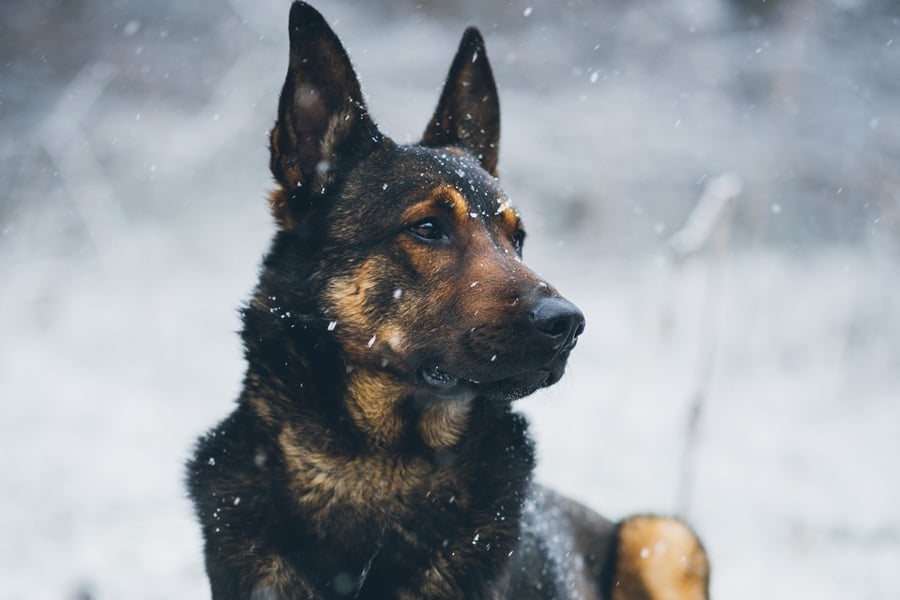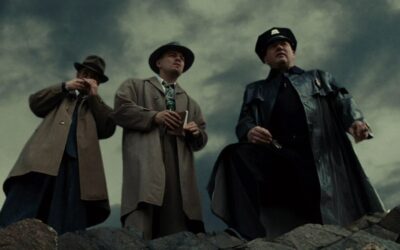
Crime-Solving Animals
Crime doesn’t always call for a hardboiled detective with a penchant for whiskey and cynicism. Sometimes, the best sleuth for the job walks on four legs, or even flies. Whiskers, feathers, and a natural instinct for sniffing out the truth, animals in mystery fiction have carved out their own niche, captivating audiences and often outwitting their human counterparts.
The legacy of crime-solving animals is both rich and whimsical, stretching from the pages of classic literature to the glossy scenes of Hollywood. Take the inquisitive and adventurous cats populating Lilian Jackson Braun’s “The Cat Who…” series. These feline detectives, led by the Siamese Koko, have an uncanny ability to lead their human, Quilleran, to clues and crime scenes, often with a purr or a pounce that seems innocuous to the untrained eye. Braun’s tales have charmed readers since the 1960s, proving that sometimes the softest detectives can tackle the hardest cases.
Then there’s the intuitive and faithful canine companions. Dogs have been a staple in detective stories, their heightened senses making them natural-born sleuths. Consider the cunning and dedicated canine in Spencer Quinn’s Chet and Bernie series, where Chet, the dog narrator, often understands the crimes better than his human detective partner. Through the eyes of man’s best friend, the novels provide a fresh take on traditional mystery elements, all while wagging a tail and fetching the bad guys.
Nestled within the fog-draped streets of the city, the pawsteps of a German Shepherd named Max resonate against the backdrop of a baffling mystery. Max, a seasoned K9 detective with the Metropolitan Police, is the protagonist in “The Scent of Fear,” a tale that finds him and his handler, Detective John Avery, on the trail of an elusive burglar known as “The Ghost.” With a series of high-stakes heists leaving the city’s elite in a state of paranoia, Max’s acute sense of smell becomes the linchpin in a case that seems impenetrable to human logic. As Avery follows leads and interviews witnesses, it’s Max’s uncanny ability to decipher the intricate tapestry of scents left behind at the crime scenes that guides them through the city’s labyrinthine alleys toward a truth shrouded in secrecy. With each sniff, Max edges closer to the burglar’s identity, unraveling a deeper conspiracy that threatens to blur the line between the hunter and the hunted. This K9 mystery seamlessly blends the thrill of a police procedural with the unique perspective of its four-legged sleuth.
Then there’s television, which has long understood the appeal of these furry detectives. The late 1970s and early 80s saw “Hart to Hart,” where Freeway, the low-slung canine sidekick, often had a nose for clues that human detectives missed. More recently, the cheeky and animated “Scooby-Doo” has been solving mysteries with his human gang for decades, proving that a Great Dane with an appetite for Scooby Snacks and an aversion to ghosts can also have an appetite for crime-solving.
But the animal kingdom’s contribution to crime fiction isn’t limited to the domesticated. Take the work of Harry Kemelman, whose “Friday the Rabbi Slept Late” features a stray cat playing a crucial role in the rabbi’s investigation. Or the more direct sleuthing of M.C. Beaton’s Hamish Macbeth series, where a wildcat named Sonsie is known for its ferocity and keen detection skills.
Parrots and other feathered friends have also pecked their way into detective fiction. The aptly named “The Cat, the Quilt and the Corpse: A Cats in Trouble Mystery” by Leann Sweeney introduces us to a cat detective aided by a crime-solving parrot, combining sharp claws with sharp beaks to unravel the threads of a mystery.
The key to these animals’ success as detectives is their unique perspective. They see the world differently, and in that difference lies their strength. They are observers unburdened by human bias, instinctively attuned to the unusual, and alert to discrepancies that humans might dismiss. In their world, the scent never lies, and the slightest rustle in the underbrush is a signpost to the truth.
Beyond the charm of these creatures is their accessibility. Animal detectives do not need a badge or a warrant. They cross thresholds and fences, enter spaces where humans might hesitate, and retrieve evidence with a tenacity that only a natural predator or an undetected observer can muster.
But what makes these furry and feathered detectives truly memorable is their relationship with their often all-too-human partners. Their interactions often highlight the human character’s flaws, humor, and emotional depth. It’s the combination of animal instinct and human intellect that creates a dynamic, almost symbiotic detective duo.
Even as they prowl, pounce, and purloin their way through crime scenes, these animals are complex characters. They aren’t simply pets caught in a human drama; they are characters with their own arcs, personalities, and development. This is evident in the intricate plots of Rita Mae Brown’s “Mrs. Murphy” series, where the titular tiger cat, along with her dog and human companions, solves crimes in the sleepy town of Crozet, Virginia. Mrs. Murphy is not merely a bystander to the human action; she is a fully realized character whose feline wisdom and courage often save the day.
This intricate portrayal of animal detectives in literature and screen has not only provided entertainment but has also subtly shifted perceptions of animals. These stories suggest a depth of intelligence and an emotional range that might not be so fantastical. They remind audiences of the bond between humans and animals, a bond that, when woven into a mystery, becomes even more intriguing.
As with any good detective story, the joy is in the journey, not just the destination. And so it is with animal detectives. The solutions to their cases often take a backseat to the delightful antics and insightful interventions of the animals themselves. Their charm lies not just in the whodunit, but in the how-did-they-do-it, which invariably involves a dash of animal antics and a different kind of logic.
Sure, they may not always follow the rules — a dogged detective might dig up a garden, or a cat sleuth might knock over a few too many vases — but their contributions are invaluable. These animal detectives remind human characters and audiences alike to look at the world from a different angle, to pay attention to the small things, and to listen to those who don’t use words to speak.
Their tales continue to resonate, spawning sequels and adaptations, and securing their place in the pantheon of mystery solvers. While they may not replace the classic trench-coated detective, they certainly earn their place alongside them, as they embody a truth known to any mystery lover: sometimes the keenest insight into the human condition comes not from our peers but from our pets.
In the landscape of mystery fiction, the presence of crime-solving animals adds a layer of whimsy and wisdom to the genre. Their tales are a testimony to the enduring appeal of the detective story, a genre that allows for innovation within its boundaries, creating a space where even a purring cat or a barking dog can lead us to a revelation. These animal detectives, in all their furry and feathered glory, prove that when it comes to solving crimes, it’s not just the two-legged who have a knack for uncovering the truth.
More Crime Features
Literary Crime
Where Depth Meets Deceit
Criminal Fashion
Iconic Outfits and Styles in Crime Fiction
Ethics in Crime Fiction
Exploring Morality in Law and Order



